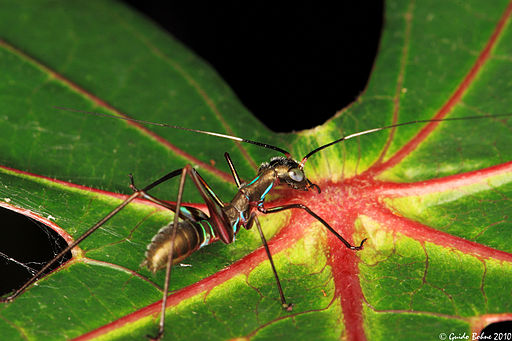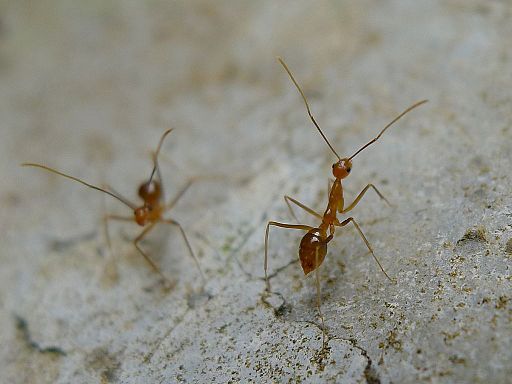What smells like vinegar and salt and can spice up your salad of unwashed minor’s lettuce?
Foragers of wild greens may recognize the familiar taste of formic acid on their greens. It’s not toxic, and for some it’s not unpleasant. But it can be used as a defense by ants.
We did not find a clearer lay explanation of how formic acid is excreted by an ant than the forum explanation below, from antweb.org:
Ants don’t technically pee: they excrete their metabolic wastes through their digestive tract, rather than through a specialized urethra. However, there are many other fascinating compounds that also come out of the back end of an ant. Many of these vary by species, and most are used in communication and/or defense. Many ants have a stinger, which they use to puncture the skin or exoskeleton of their enemies and pump poison into them (after all, ants are closely related to bees and wasps). The most painful experience you could have with an ant is getting stung by one. Some can do a little bit of damage by biting (especially very large ants like Camponotus gigas) but most ants combine biting with stinging or some other chemical defense when they are hunting or defending themselves.
Many ants do not have stings, and rely entirely on chemicals that they can secrete or spray instead. One of the most common and obvious of these chemicals is called formic acid. Formic acid is sprayed out of a specialized nozzle at the back end of ants in the subfamily Formicinae.
Thanks to Jesse Czekanski-Moir & the AntAsk TeamJesse Czekanski-Moir & the AntAsk Team for this forum response at antweb.org.



